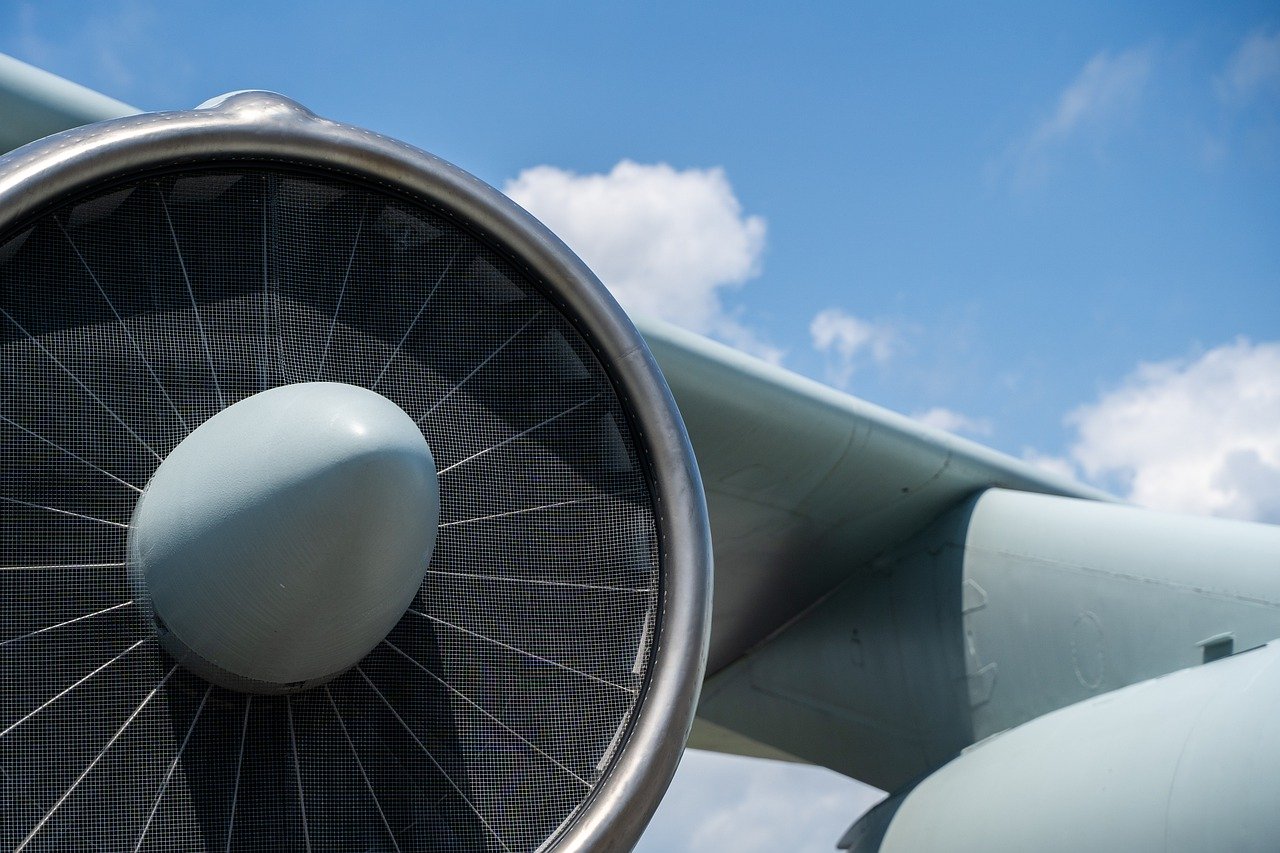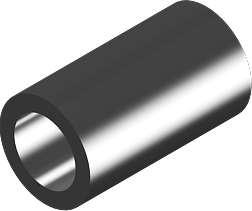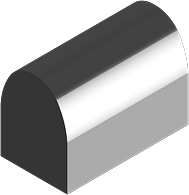Stainless Steel 21-6-9
View AMS Numbers >
Stainless Steel 21-6-9
21-6-9 is a nitrogen strengthened austenitic stainless steel with high manganese content. The alloy possesses many wanted properties, such as outstanding resistance to oxidation at higher temperatures in the annealed condition, good resistance to molten lead oxide corrosion, and exceptional air corrosion resistance.
Due to the higher initial yield and high work-hardening rate, Stainless Steel 21-6-9 has similar workability properties to Stainless Steel 301, 302, 304, and 316. That said, the alloy requires a higher force for forming parts than those stainless steel alloys. 21-6-9 stays non-magnetic, even after severe cold work.
The alloy is readily weldable using standard methods. Moreover, thanks to the low carbon content, 21-6-9 has excellent intergranular corrosion resistance, even when welded.
Thanks to the high mechanical strength of 21-6-9, the alloy is primarily used for the manufacturing of components in the aircraft industry. These parts mostly include hydraulic tubes, but also for engine parts. Meanwhile, Stainless Steel 21-6-9 also has excellent impact toughness at cryogenic temperatures, down to -382 °F (-230 °C).
Tech Steel & Materials offers Stainless Steel 21-6-9 in four sub-type specifications and multiple shapes/forms:
Chemical Composition of Stainless Steel 21-6-9
| Element | Min (%) | Max (%) |
| Carbon, C | – | 0.08 |
| Manganese, Mn | 8 | 10 |
| Silicon, Si | – | 1 |
| Sulfur, S | – | 0.03 |
| Phosphorus, P | – | 0.06 |
| Chromium, Cr | 19 | 21.50 |
| Nitrogen, N | 0.15 | 0.4 |
| Nickel, Ni | 5.5 | 7.5 |
| Iron, Fe | – | *Balance |
*Not exclusively to the element mentioned, but that one predominates other elements that are used only in minimal quantities.
Fabrication and Working Instructions
Stainless Steel 21-6-9 can be hot- and -cold-worked using most traditional methods. For hot working, the best temperature for initial forging is around 2100 °F to 2200 °F (1150 °C to 1200 °C), with a minimum temperature of about 1200 °F (650 °C). 21-6-9 doesn’t require preheating and should be annealed after forging for maximum corrosion resistance. The alloy also possesses excellent resistance to crackling and, therefore, can be rapidly cooled after hot working.
Stainless Steel 21-6-9 can be hot-worked using all conventional methods, but it requires a higher force compared to similar alloys. Also, this alloy can’t be strengthened by heat treatments. Instead, 21-6-9 can be solution strengthened or strengthened by hot- and -cold-working processes at temperatures ranging from 1200 °F to 1500 °F (650 °C to 815 °C), followed by stress relief at 900 °F to 1400 °F (480 °C to 760 °C).
Stainless Steel 21-6-9 can be readily welded using shielded fusion and resistance welding, using a fitting filler metal. Oxyacetylene welding should be avoided to minimize carbon buildup in the weld.
Stainless Steel 21-6-9 Physical Properties
| Property | Min (%) | Max (%) |
| Specific Gravity | 7.83 | 7.83 |
| Density | 0.283 lb/in3 | 7.83 g/cm3 |
| Mean Specific Heat | 0.12 Btu/lb-°F (32/212 °F) | 500 J/kg-K (0-100 °C) |
| Electrical Resistivity | 439 ohm-cir mil/ft | 730 microohm-mm |
| Modulus of Elasticity (annealed) | 28500 ksi | 196500 MPa |
| Mean Coefficient of Thermal Expansion (80 °F to 200 °F) (27 °C to 93 °C) | 9.3 [10(-6)/°F] | 16.7 [10(-6)/K] |
| Mean Coefficient of Thermal Expansion (80 °F to 600 °F) (27 °C to 316 °C) | 10.1 [10(-6)/°F] | 18.2 [10(-6)/K] |
| Mean Coefficient of Thermal Expansion (80 °F to 1000 °F) (27 °C to 538 °C) | 10.6 [10(-6)/°F] | 19.1 [10(-6)/K] |
| Mean Coefficient of Thermal Expansion (80 °F to 1600 °F) (27 °C to 871 °C) | 11.2 [10(-6)/°F] | 20.2 [10(-6)/K] |
| Thermal Conductivity (@ 200 °F) (@ 93 °C) | 96 [Btu-in/ft²-hr-°F] | 14 [W/m-K] |
| Thermal Conductivity (@ 600 °F) (@ 316 °C) | 126 [Btu-in/ft²-hr-°F] | 18 [W/m-K] |
| Thermal Conductivity (@ 1000 °F) (@ 538 °C) | 156 [Btu-in/ft²-hr-°F] | 23 [W/m-K] |
| Thermal Conductivity (@ 1600 °F) (@ 871 °C) | 200 [Btu-in/ft²-hr-°F] | 29 [W/m-K] |
| Shear Modulus (annealed) at 450 °F (232 °C) | 11000 ksi | 75.8 GPa |
| Magnetic Permeability Annealed (@ 75 °F) (@ 24 °C) at 50 Oersteds | 1.005 | 1.00265 |
| Magnetic Permeability Annealed (@ -350 °F) (@ -212 °C) at 50 Oersteds | – | – |
| Magnetic Permeability 15% Cold Reduced (@ 75 °F) (@ 24 °C) at 50 Oersteds | 1.004 | 1.004 |
| Magnetic Permeability 35% Cold Reduced (@ 75 °F) (@ 24 °C) | 1.005 | 1.005 |
| Magnetic Permeability 60% Cold Reduced (@ 75 °F) (@ 24 °C) at 50 Oersteds | 1.010 | 1.010 |
| Proof Strength Rp0.2 (@ 68 °F) (@ 20 °C) annealed condition | ≥48 ksi | ≥330 MPa |
| Tensile Strength Rm (@ 68 °F) (@ 20 °C) annealed condition | ≥95 ksi | ≥655 MPa |
| Elongation A2″ (@ 68 °F) (@ 20 °C) annealed condition | ≥35 | ≥35% |
| Proof Strength Rp0.2 (@ 68 °F) (@ 20 °C) hard condition | ≥120 ksi | ≥827 MPa |
| Tensile Strength Rm (@ 68 °F) (@ 20 °C) hard condition | ≥142 ksi | ≥ 979 MPa |
| Elongation A2″ (@ 68 °F) (@ 20 °C) hard condition | ≥20% | ≥20% |
Select AMS Number:
| AMS Number | Alloy | Type | UNS | Cross Ref. Spec | Misc./Shape | |
|---|---|---|---|---|---|---|
| AMS 5561 |
21-6-9 | Stainless Steel | S21900 | - | Tubing |
 |
| AMS 5562 |
21-6-9 | Stainless Steel | S21900 | - | Tubing |
 |
| AMS 5595 Plate | 21-6-9 | Stainless Steel | S21904 | - | Plate |
 |
| AMS 5595 Sheet | 21-6-9 | Stainless Steel | S21904 | - | Sheet |
 |
| AMS 5595 Strip | 21-6-9 | Stainless Steel | S21904 | - | Strip |
 |
| AMS 5656 Bar | 21-6-9 | Stainless Steel | S21904 | - | Bar |
 |
| AMS 5656 Forging | 21-6-9 | Stainless Steel | S21904 | - | Forging |
 |

 Tech Steel & Materials
Tech Steel & Materials